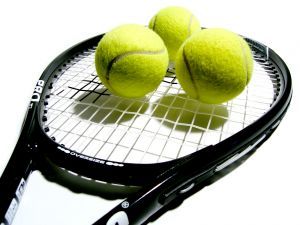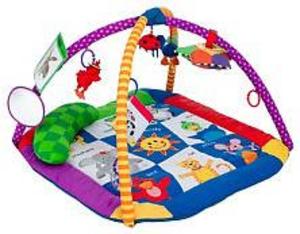Have you been looking for a new tennis racquet and wondering exactly what difference having a $300 graphite racquet instead of a $30 aluminum one would make in your game? The problem is there’s a huge array of tennis racquets out there and each one is right for someone. To choose a tennis racquet that’s right for you as a beginner, though, will takes some knowledge of your needs and how variations in racquet design affect how the racquet works. The good news is that the less expensive racquets are often more useful for beginners than the high-priced, advanced-level racquets.
Head size and shape
The size of the racquet’s head is one of the most important factors in its design. The bigger the racquet’s head, the larger the “sweet spot,” which means your hits will be more powerful. The larger hitting surface means you’ll miss fewer shots, too. If you’re a beginner, go for an oversize racquet (between 107 sq. in. and 115 sq. in) or even a super oversize racquets (116 to 135 sq. in.). On the downs side thought, the larger head gives you less control. If you’ve already got some playing skill, you may want to try a mid-sized head (100 sq. in. to 106 sq. in.). In any case, try to get a racquet with a head no smaller than 100 square inches.
The shape of the racquet head is largely an aesthetic consideration, but it does have some effect on the racquet’s power. The standard oval shaped head places the sweet spot in the lower half of the head, which will give you more resiliency and feel for the ball. As a beginner, though, you may prefer the tear drop shaped heads. With these, you’ve got an overall bigger sweet spot and thus more power.
Length
The length of racquet you choose depends largely on how big you are, although you should take your skill into consideration, too. For beginners, a long racquet (28.5-29 inches) is useful because it gives you a longer reach and leverage that lets you hit with more power. The standard 27.5-28 inch racquet, however, provides a good balance between power and control and will work well for you if you already have some basic tennis skills.
Weight and balance
A tennis racquet’s weight affects both power and control. Light-weight racquets are in vogue these days and easy to find. For beginners, though, a heavier racquet that weighs more than 11 ounces will be better. These give you more power without much loss of control. A light raquet can actually be harder to control than a heavy one. The mid-weight (9.8-10.9 ounce) raquets are also fine for beginners, but provide less power and can tire out your arm by letting it absorb the impact of your shot.
How the weight of the racquet is balanced is also important to consider when you choose a beginner’s tennis racquet. Tennis racquets are classified as either head-heavy or head-light. For the beginner looking for a powerful racquet, a head-heavy racquet is usually the best choice. Keep in mind that the fact one racquet feels lighter than another doesn’t help you determine its head weight. A lighter feeling racquet may have a heavier head than a heavy-feeling one.
Stringing
A loosely strung racquet gives you more power, but a tightly strung one offers more control. Ideally, a beginners tennis racquet should be strung a little loose for more power, but unless you have someone who can string the racquet for you, you’re better off buying a pre-strung racquets. Tennis raquect manufacturers specify a certain range for string tension and letting a professional string the racquet will give you one that’s strung somewhere in the middle of that range. String gauge, or thickness, is another thing to consider. Stick with thicker strings (15 gauge) as you learn the game. These don’t offer the sense of feel that advanced players get from thinner strings (16 and 17 gauge), but they do last longer. As for strong material, you’ll probably want to go for synthetic. Advanced players prefer gut strings, again for better feel, but they’re expensive and wear out fast. Unless you’re highly skilled, though, you may not even notice the difference.
Grip size
Getting the right grip size not only helps your game, it protects you from injury, too. A grip that’s too small or large causes your hand and wrist to move in unhealthy ways, which can lead to tennis elbow and other chronic joint problems.
Grips are sized from grip 1(4 1/8 inches) to 5 grip (4 5/8 inches). Young players will need 1 or 2, most women take grip 2 or 3, and men use grip 3 or 4. If you have really big hands, though, you may need a 5. To find out your grip size, measure your open from the middle of your palm to the end of your ring finger. When you try out a racquet, hold it with your forehand grip and lay the index finger of your other hand where the fingers of your playing hand meet. If there’s no space between on the sides of your index finger, the grip is to small. If there’s plenty of room, the grip’s too big. If you are between sizes, don’t worry. Get a smaller grip and have it fitted with an overgrip sleeve to increase the grip size to fit your hand.
If you’re trying to choose a beginner’s tennis racquet, look for one with an oversized head, a head-heavy balance, and that comes pre-strung. This type of racquet will provide the power most beginners need.



